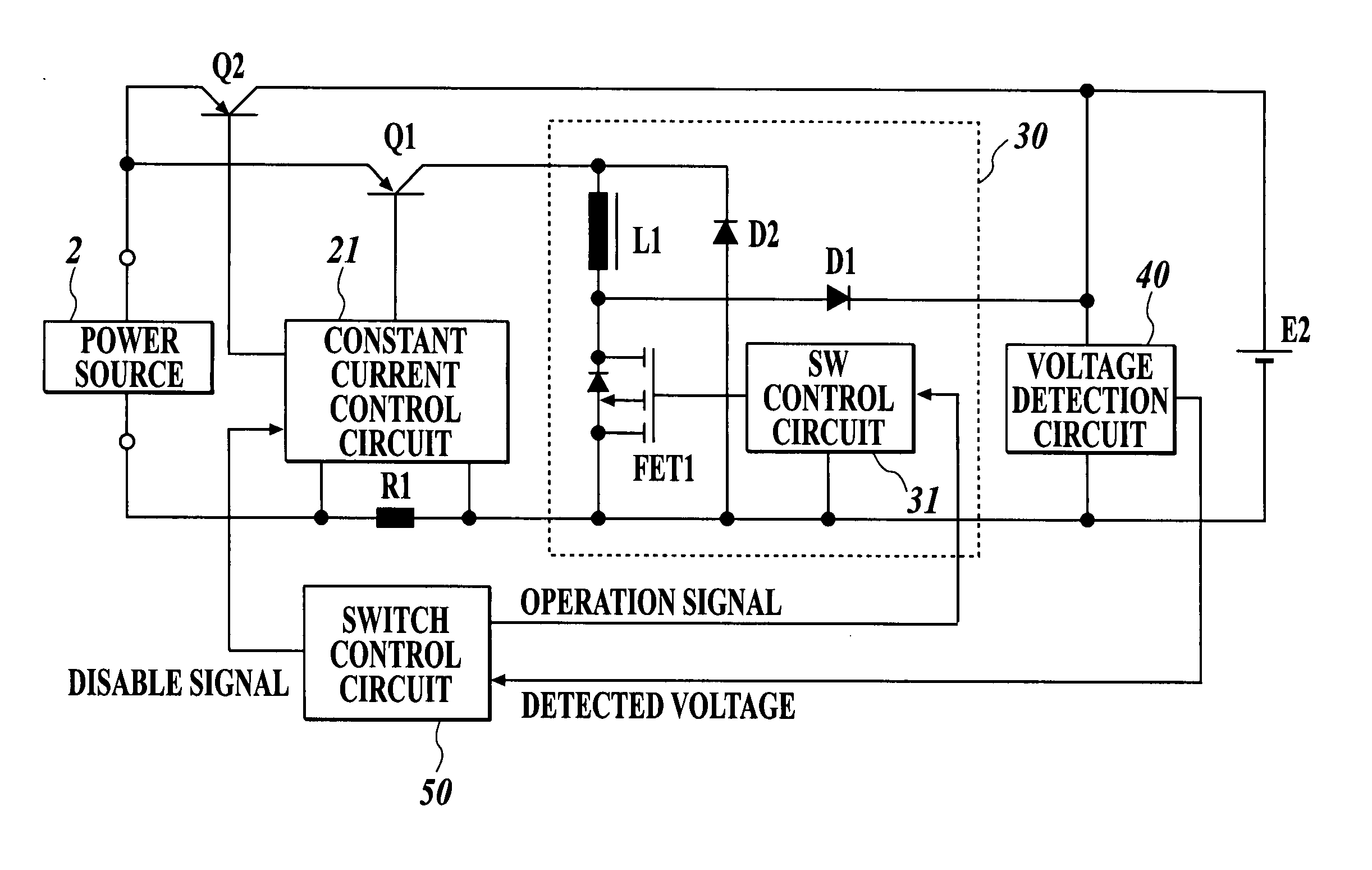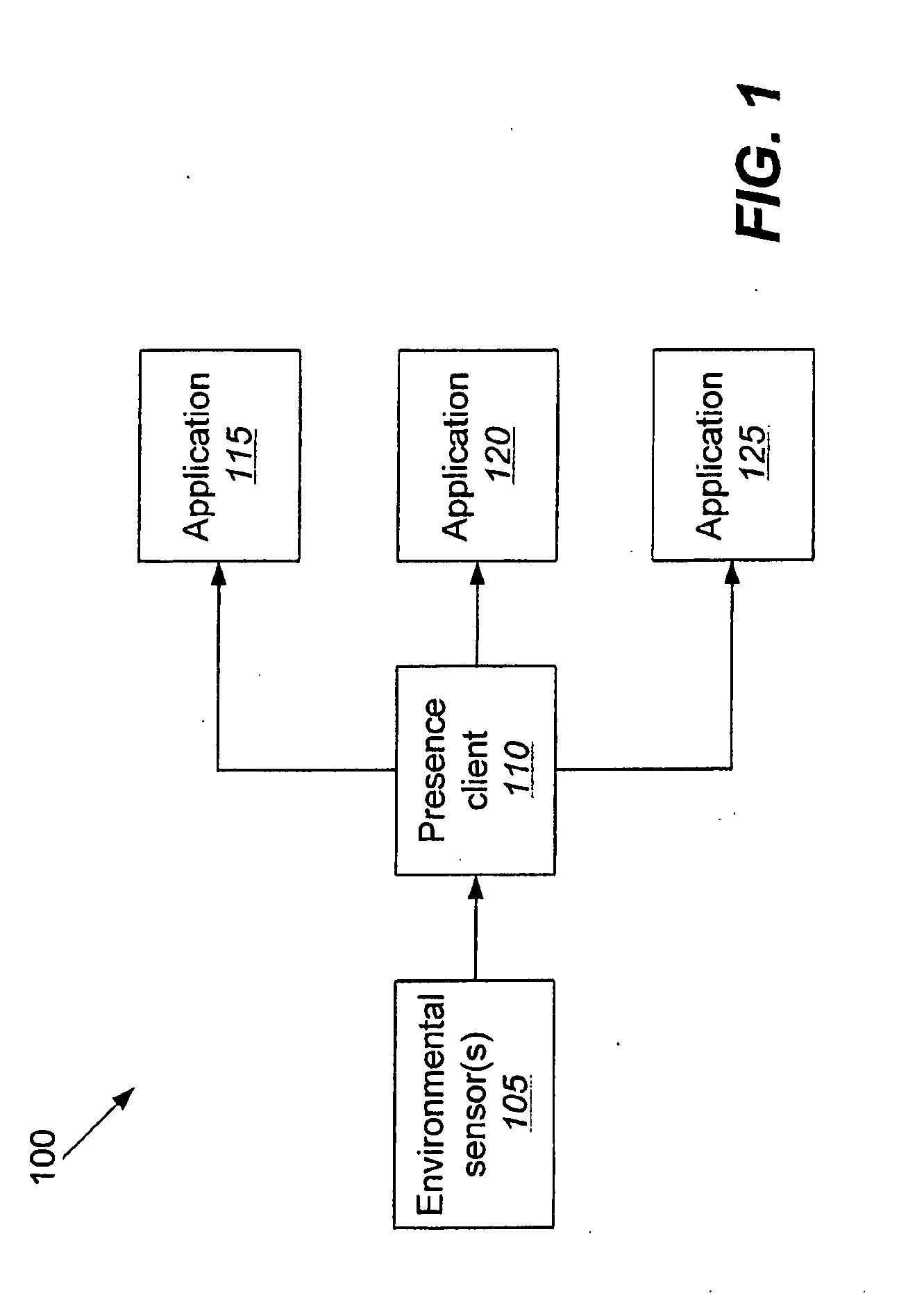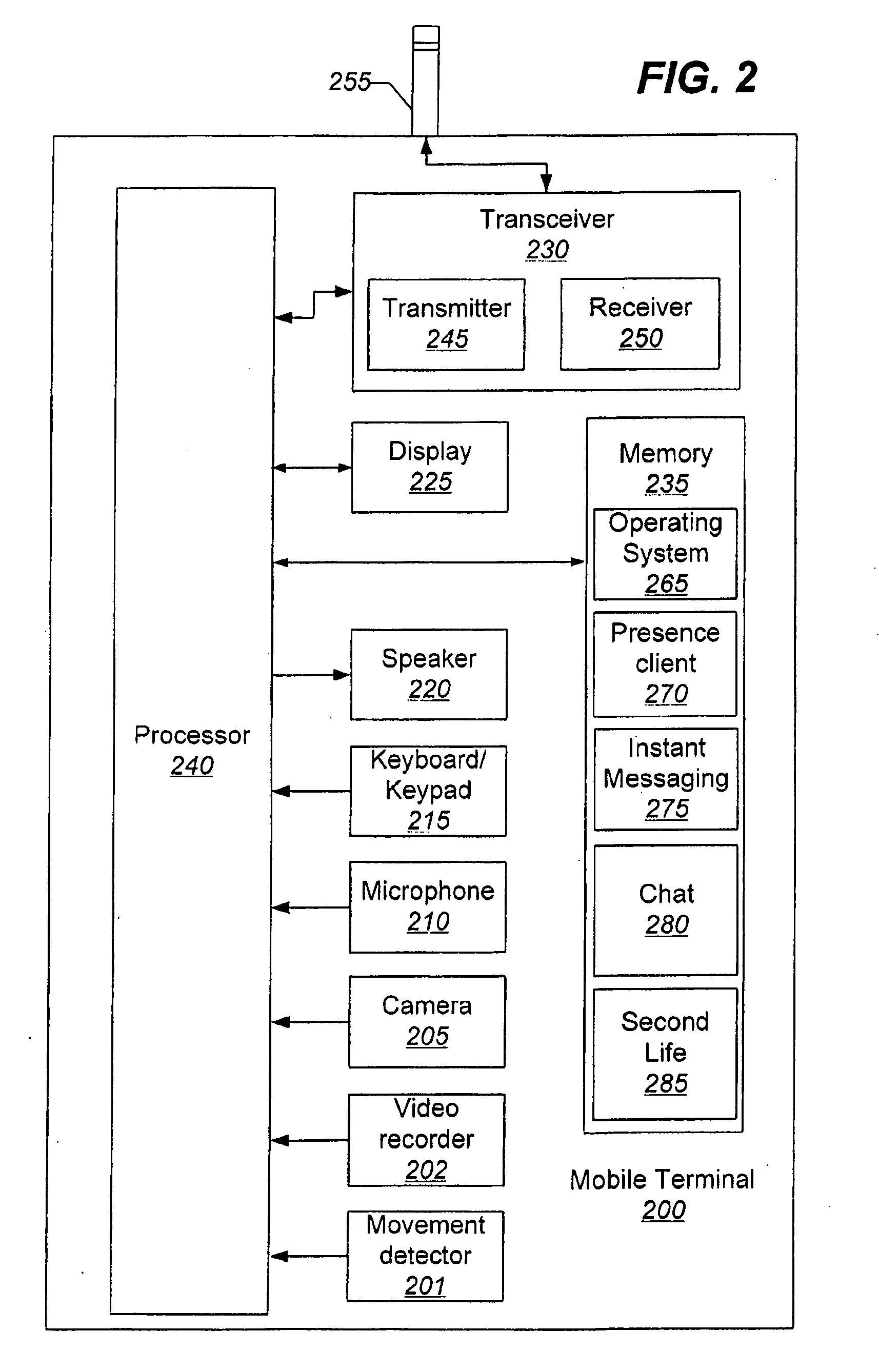Secondary battery charging circuit
- Summary
- Abstract
- Description
- Claims
- Application Information
AI Technical Summary
Benefits of technology
Problems solved by technology
Method used
Image
Examples
first embodiment
[0069]FIG. 1 is a block diagram showing the basic configuration of a charging system according to a first embodiment of the present invention, FIG. 2 is a block diagram showing the configuration of a charging circuit, and FIGS. 3 and 4 are diagrams showing exemplary circuit configurations of the charging circuit. FIG. 5 is a graphical illustration of charging characteristics explaining the operations of this charging system.
[0070]The charging system according to this embodiment charges a secondary battery E2 such as, for example, a lithium ion battery by a power source voltage supplied from a power source apparatus 2 such as, for example, an AC adaptor. The charging system is provided with a charging circuit 4 to which power source voltage is input and that outputs charging voltage to the secondary battery E2.
[0071]A general method of charging a lithium ion battery or the like is as follows. When the percentage of charge of a lithium ion battery is low, the voltage between its termi...
second embodiment
[0095]FIG. 6 is a block diagram showing the basic configuration of the charging system according to a second embodiment, and FIG. 7 shows an exemplary circuit configuration thereof.
[0096]The charging system according to the second embodiment is substantially the same as the charging system according to the first embodiment in that the power source voltage is set to a voltage that is lower than the full-charge voltage, and in that constant current charging without voltage step-up, constant current charging with voltage step-up and constant voltage charging at the full-charge voltage are performed according to the voltage of the battery during charging.
[0097]The charging system of the second embodiment has, in addition to the above described components, a power source voltage detection circuit 3 that detects the input voltage from the power source apparatus 2 and allows the operation of charge processing circuits (such as the constant current circuit and the voltage regulator) after v...
third embodiment
[0107]FIG. 9 shows the circuit configuration of a charging system according to a third embodiment.
[0108]The charging system of the third embodiment has substantially the same configuration as the charging system of the first embodiment, but only the section that generates operation timing of the voltage regulator 30 is modified.
[0109]In the charging system of this embodiment, the voltage difference between the power source voltage and the battery voltage is detected by a voltage difference detection circuit 60, and the time at which this voltage difference becomes equal to a reference voltage, that is, for example, the time at which “power source voltage E0”−“battery voltage E1”1. At this time, the voltage difference detection circuit 60 outputs a detection signal, and the switch control circuit 50 outputs an operation signal to the SW control circuit 31 based on this detection signal. Thus, a shift from the constant current charging without voltage step-up to the constant current c...
PUM
 Login to View More
Login to View More Abstract
Description
Claims
Application Information
 Login to View More
Login to View More - R&D Engineer
- R&D Manager
- IP Professional
- Industry Leading Data Capabilities
- Powerful AI technology
- Patent DNA Extraction
Browse by: Latest US Patents, China's latest patents, Technical Efficacy Thesaurus, Application Domain, Technology Topic, Popular Technical Reports.
© 2024 PatSnap. All rights reserved.Legal|Privacy policy|Modern Slavery Act Transparency Statement|Sitemap|About US| Contact US: help@patsnap.com










